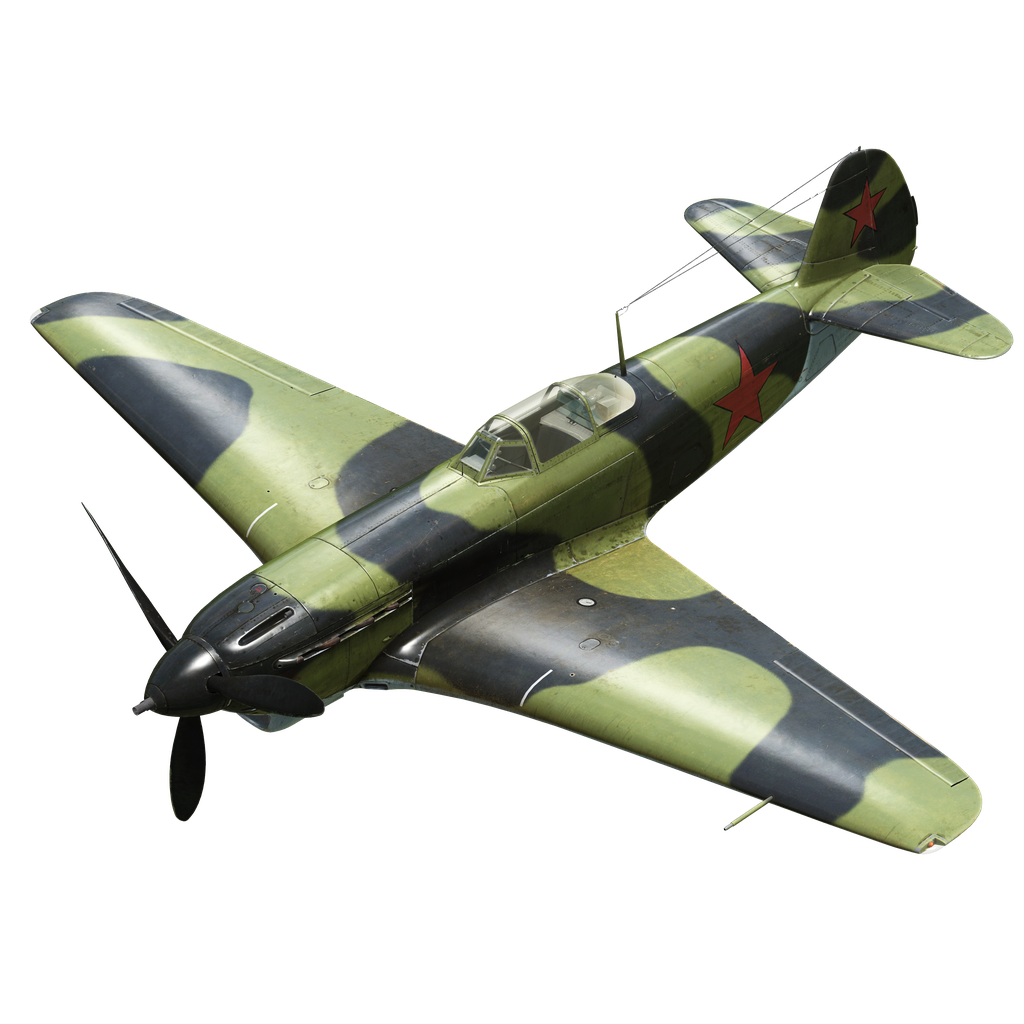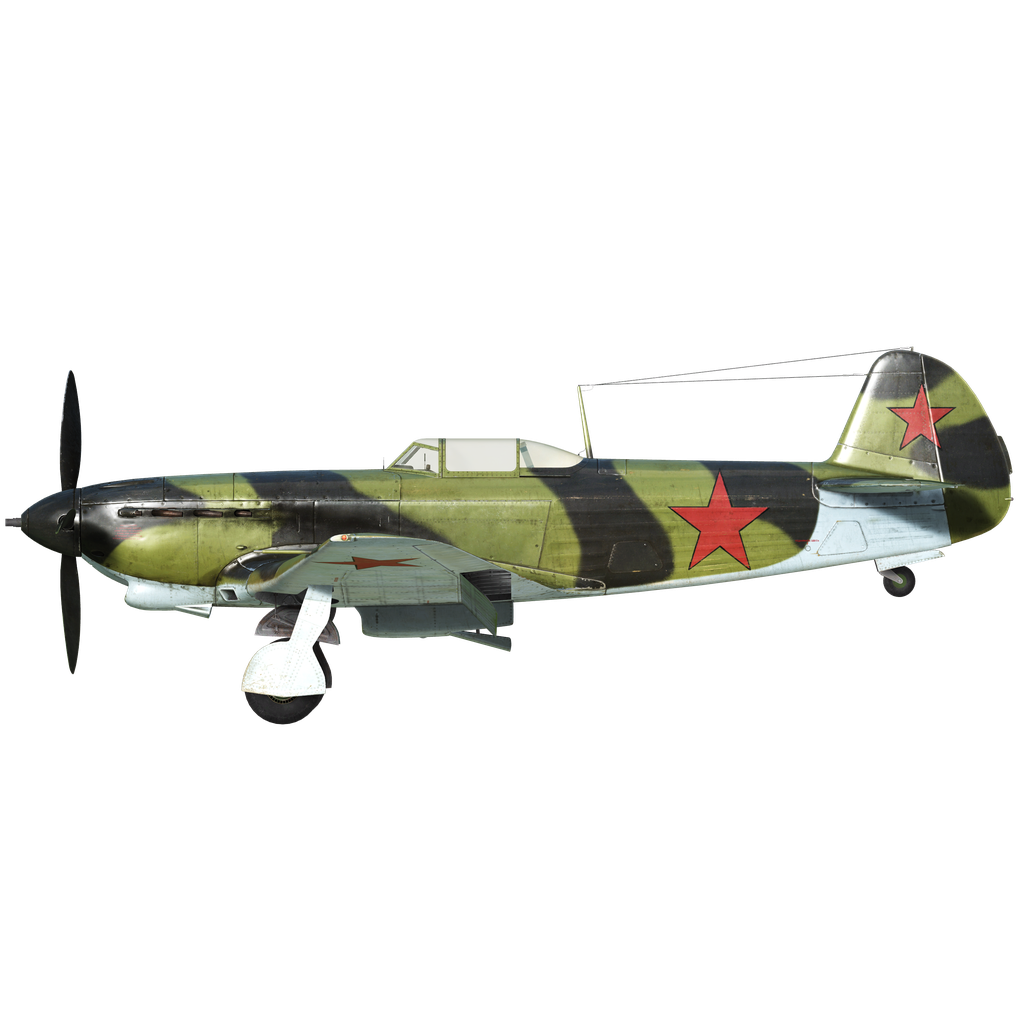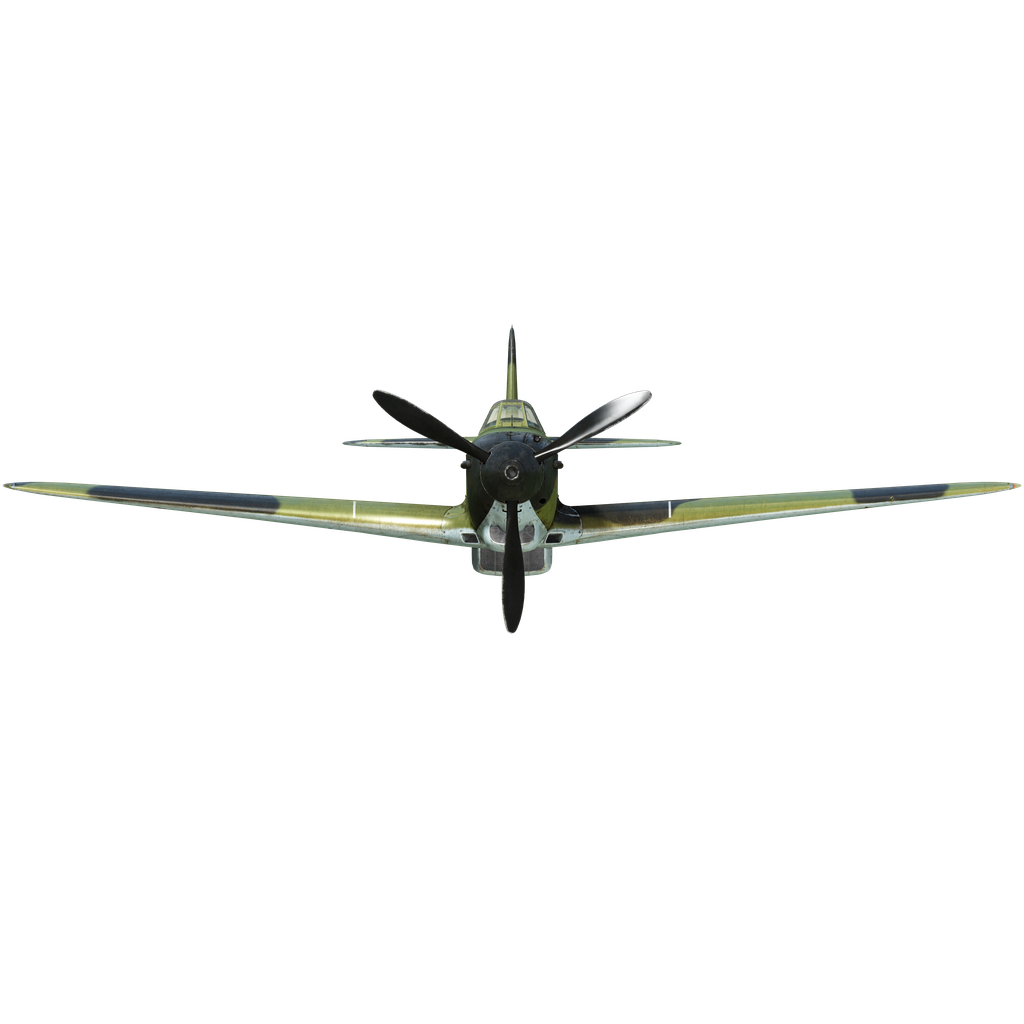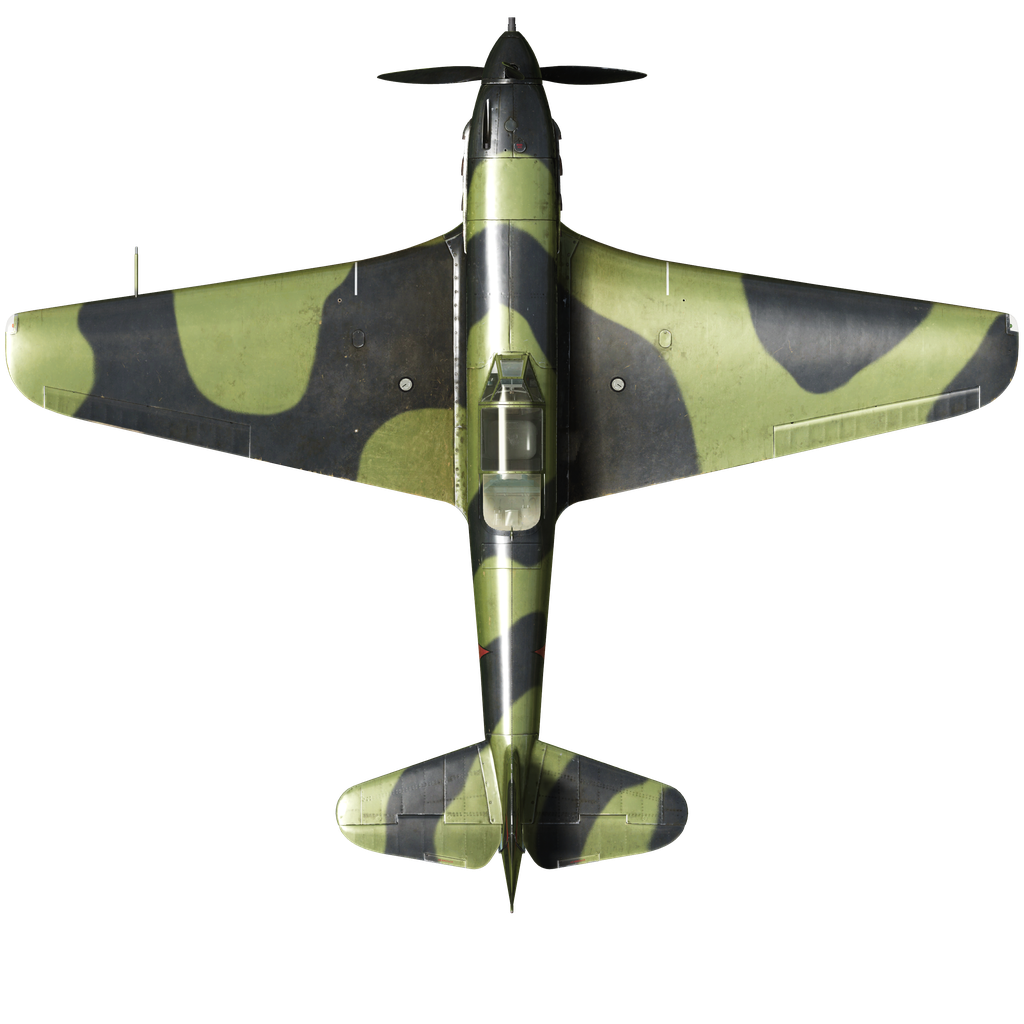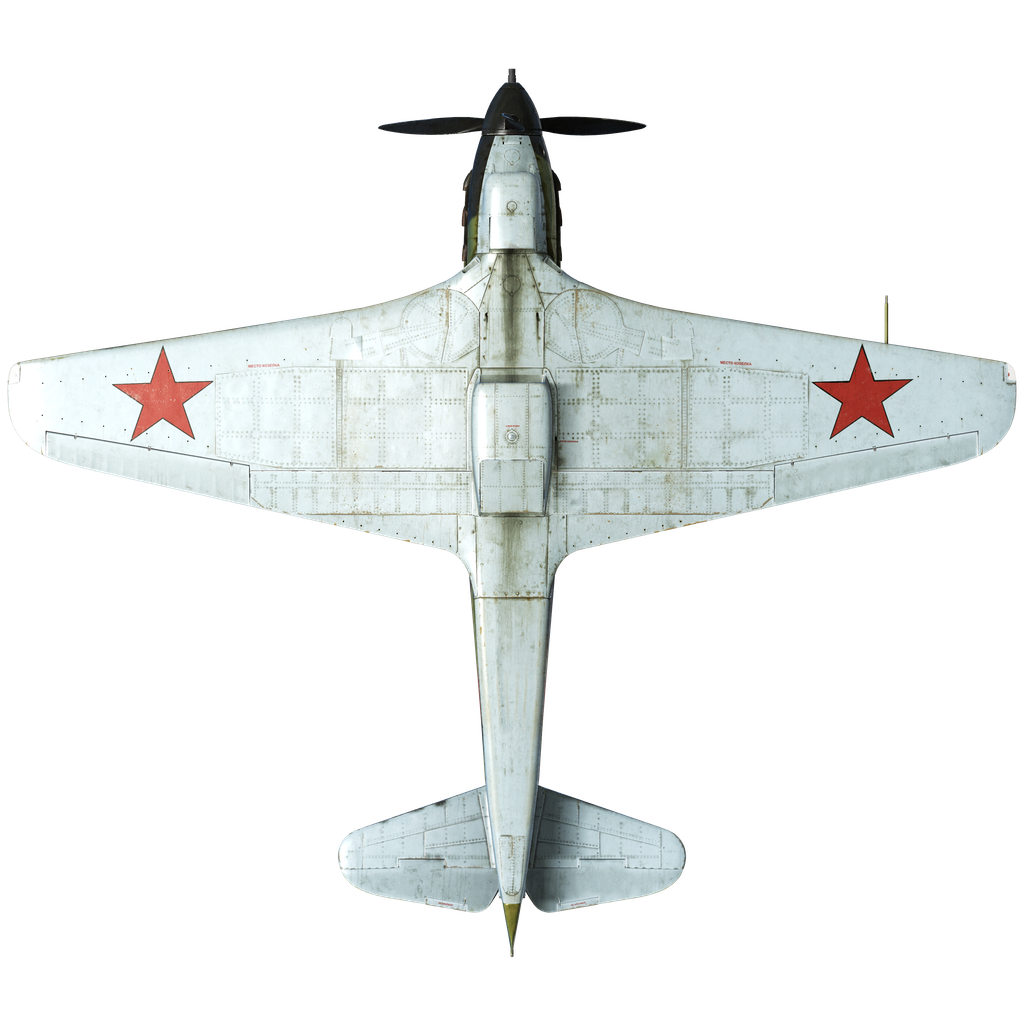The design bureau of the Deputy People's Commissar for the Aircraft Industry Yakovlev was among those involved in creating a new generation of combat aircraft in the USSR, working on the I-26 project. The specialization of the design bureau, which had previously created sport aircraft, had a positive impact on the project. The fighter was to have high speed and maneuverability thanks to efficient aerodynamic design and a rational layout with all large masses near the center of gravity.
In order to retrain pilots for Yak aircraft, a two-seat training version of the Yak-7UTI began production in March 1941, but the shortage of fighters at the front naturally led to the idea of converting the training version into a single-seat combat version: this was the Yak-7. When in the summer of 1942 the opportunity arose to use aluminum alloys more widely, it was decided to create a lightweight version of the Yak-7DI (long-range fighter). Tests carried out from the end of June to the beginning of August confirmed the high performance of the new aircraft, which received the designation Yak-9.
The Yak-9 became the founder of the most numerous family of Soviet fighters during the Great Patriotic War. One of the first modifications of the aircraft was the Yak-9T version with improved armament.
The Yak-9T was a single-seat front-line fighter monoplane with a low wing of mixed design with a metal spar and retractable two-strut landing gear and tail wheel. Unlike the standard Yak-9, it was equipped with a large-caliber 11P (NS-37) motor cannon, and the installation of heavier and more powerful weapons required a number of significant design changes. The load-bearing frame of the fuselage was strengthened in the front section, and to accommodate the gun breech and keep the alignment within acceptable limits, the cockpit was moved rearwards, which slightly worsened the forward visibility during landing, but at the same time improved the visibility of the rear hemisphere during flight.
The engine remained the same M-105PF with a VISH-61P propeller. The engine developed a power of 1240 hp at take off and 1200 hp. at an altitude of 4000 m.
The 37 mm cannon was located in the camber of the engine cylinder block for firing through the hollow transmission shaft and propeller hub and was attached at two points: to the engine and the airframe. The barrel protruded from the propeller spinner, increasing the length of the aircraft. The UBS heavy machine gun, mounted above the engine on the left, was used for zeroing before opening fire from the cannon.
A total of 2,748 Yak-9Ts were built. With a normal takeoff weight, the Yak-9T's flight characteristics were similar to those of the Yak-9, slightly inferior in vertical maneuvering, but much superior in firepower: the mass of a second salvo from the Yak-9T was even greater than that of the Bf 110 and the Fw 109 A-8. The combat experience of the Yak-9T showed that its armament scheme was quite effective: hitting an enemy aircraft with a single shell usually resulted in its destruction, and the armor-piercing shells of the NS-37 cannon easily penetrated the armor of German tanks up to 30 mm thick at a distance of 500 m at an angle of up to 45°.
Compared to the Bf 109 G-2, armed with three cannons and two machine guns, the Yak-9T had an advantage in horizontal speed up to an altitude of 4,600 m. In vertical maneuvering, the Yak-9T maintained its advantage over the Bf 109G-2 up to an altitude of 3,000 m, at altitudes of 3,000 - 4,500 m their performance was about equal, and above that the advantage went to the Bf 109 G-2.
The higher efficiency of the 37 mm projectile and the limited ammunition load required the Yak-9T to be flown by highly qualified pilots, as it had to be fired in short bursts of one or two, at most three rounds. The limited ammunition load also meant that the Yak-9T had to be covered in combat by aircraft with lighter weapons, so these planes were used by mixed regiments and made up no more than 2/3 of their aircraft fleet.
Used sources:
V. Shavrov “History of aircraft designs in the USSR 1938-1950.” 1988
M. Nikolsky “Yak-fighter” Aviation and Cosmonautics magazine No. 5-5 1999
Materials from the site airwar.ru
